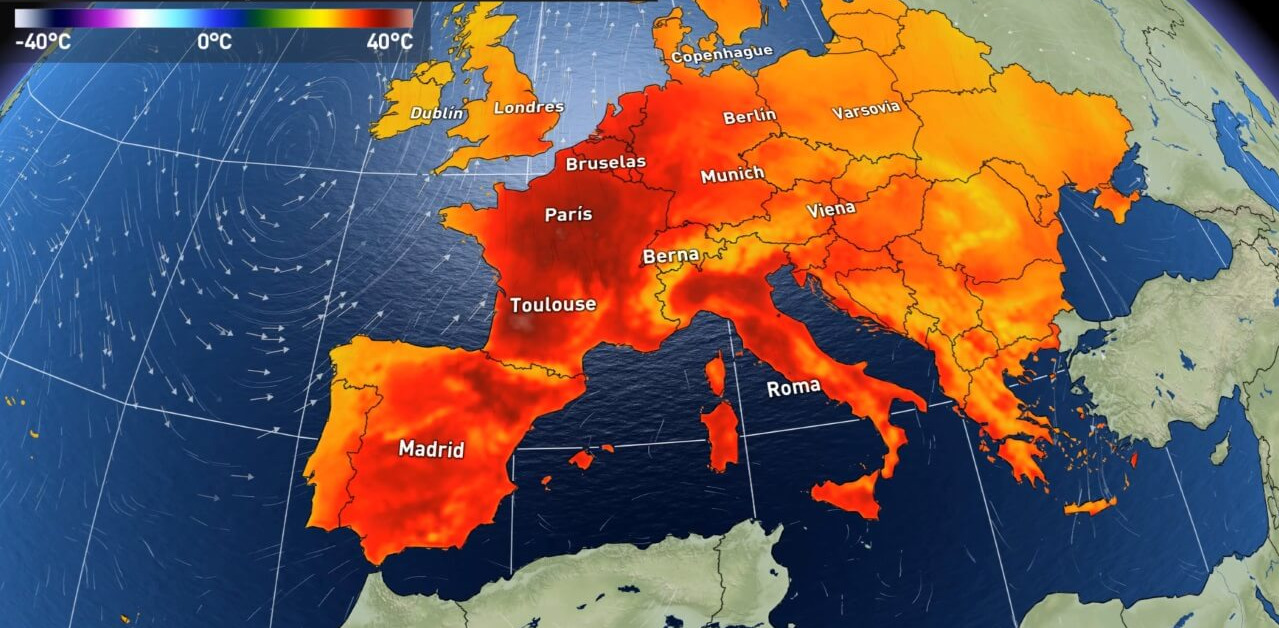
Western Europe recorded the hottest June since temperature records began to be kept
By Guillermo Alvarado
Western Europe recorded the hottest June since temperature records began to be kept, but those temps could get old this weekend when thermometers are expected to mark levels never seen before.
Several governments are drawing up plans to deal with what could be a real national emergency that could endanger the lives of vulnerable people, such as the elderly, children or chronically ill patients, as well as disrupt land and air transport.
In the United Kingdom, authorities warned that for the first time in history between today and tomorrow the temperature could rise to 40 degrees Celsius, which led to the issuance of an alert in several places with the warning of a potential risk of death.
A similar situation is foreseen in France, where since Tuesday a mass of intense heat entered, which could last at least eight to ten days with its worst effects starting today, July 16.
The Météo-France service said that in the southwest of the country, which is also affected by several forest fires, it could reach up to 39 degrees Celsius.
Italy has also declared a state of emergency in five regions and there is much concern about the situation in the north, which has been suffering from an intense drought for several weeks.
And as is almost always the case, along with the heat comes the fire, which is destroying extensive forest areas from Portugal to Greece.
Over the course of the week, thousands of hectares have been burned by the flames and the weather forecasts are worrying, because everything indicates that the heat wave will continue.
Météo-France explained that the phenomenon is due to a heat dome that settled over Moroccan territory in North Africa and spread westward.
"This dome acts as a lid that traps the hot air. Gradually it compresses, and this compression physically causes a rise in temperature," explained Sébastien Léas, of the French climate service.
These are new signs of how global warming, caused by human activity, is causing more and more extreme problems, which are inevitably bringing us closer to a point of no return, which unfortunately is not too far away.

